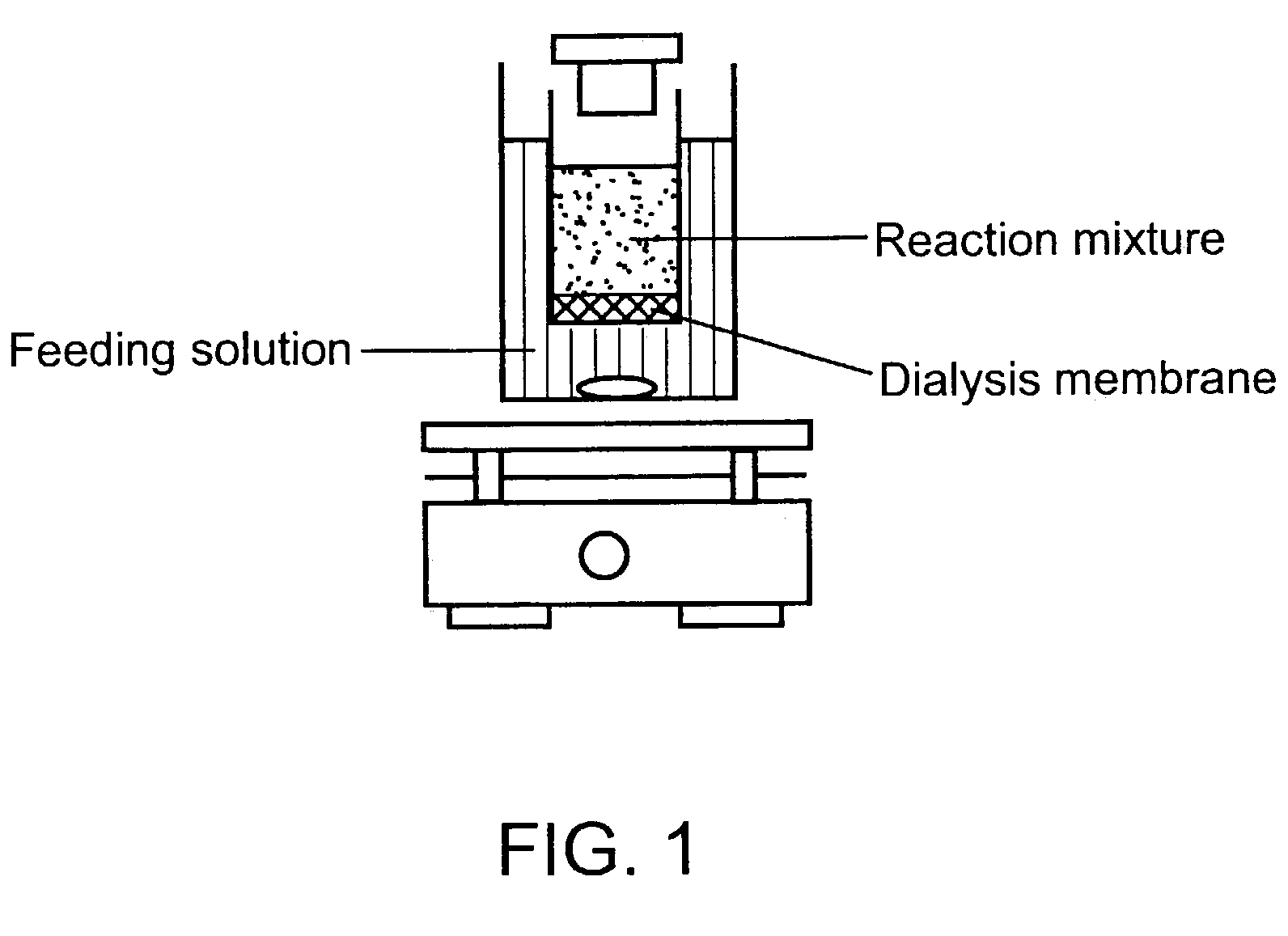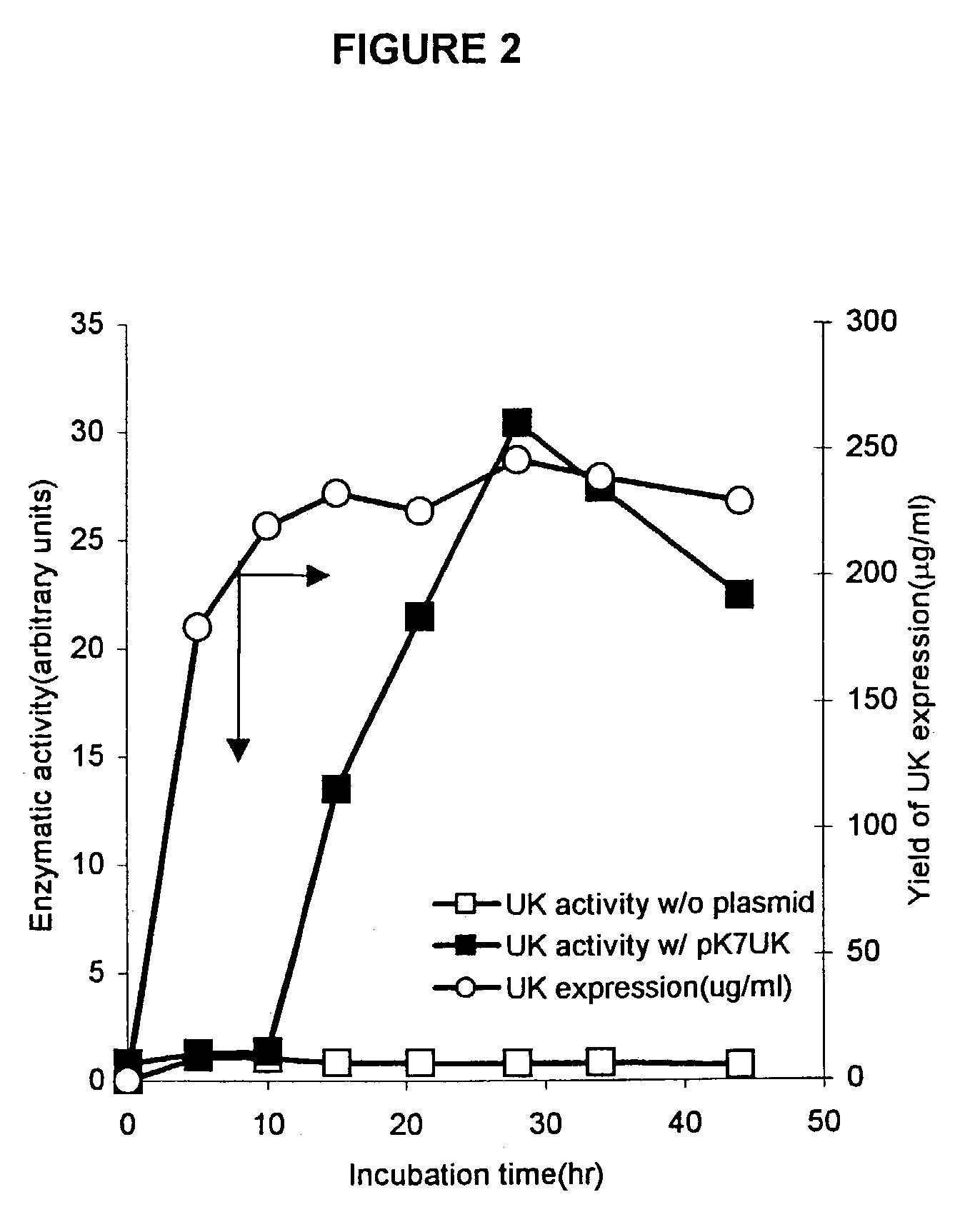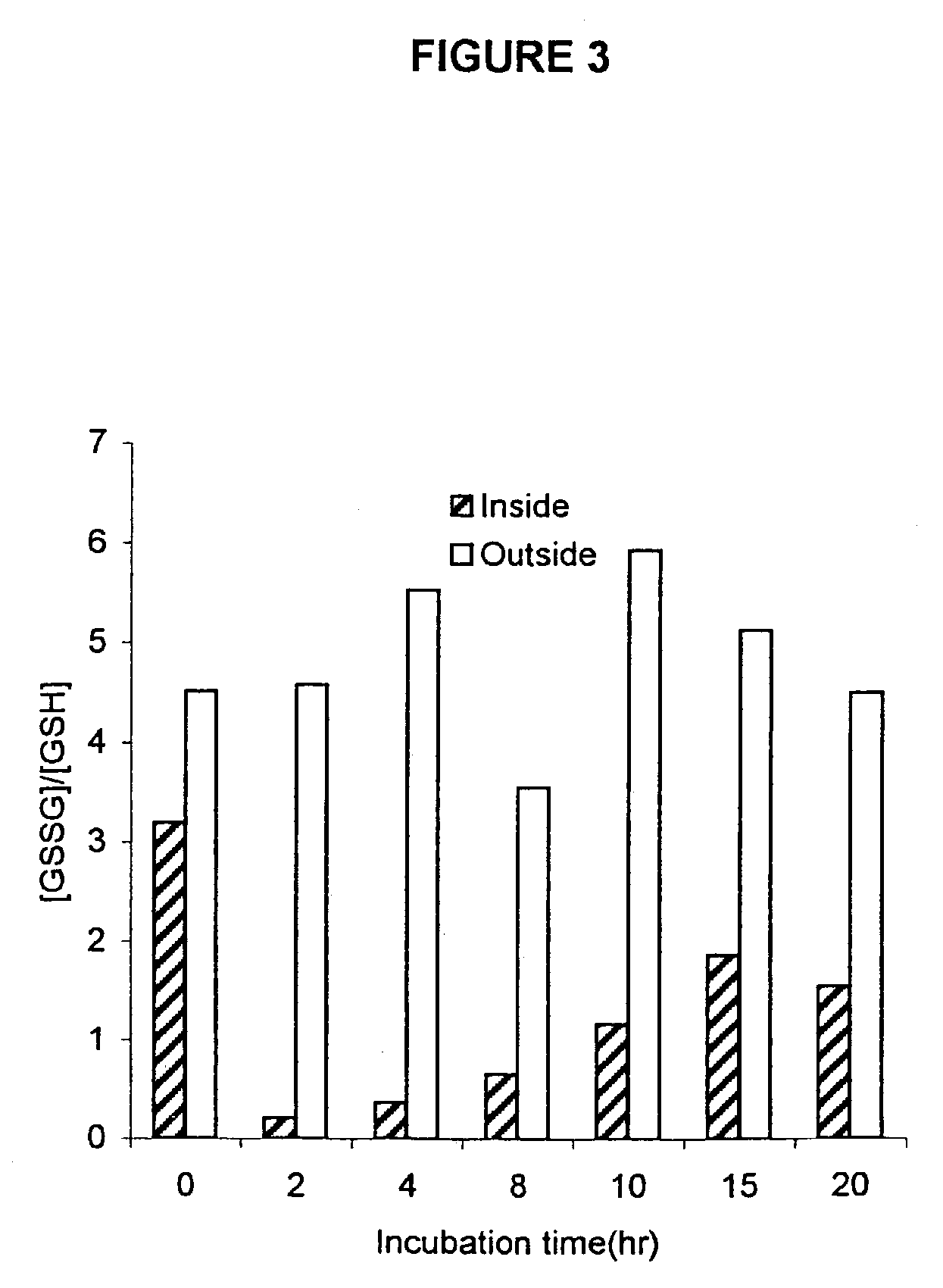Enhanced in vitro synthesis of active proteins containing disulfide bonds
- Summary
- Abstract
- Description
- Claims
- Application Information
AI Technical Summary
Benefits of technology
Problems solved by technology
Method used
Image
Examples
example 1
Expression of the serine Protease Domain of Murine Urokinase in a Cell-Free System
[0089]The standard reaction mixture for cell-free protein synthesis consists of the following components: 57 mM Hepes-KOH (pH 8.2), 1.2 mM ATP, 0.85 mM each of GTP, UTP and CTP, 0.64 mM cAMP, 200 mM potassium glutamate, 80 mM NH4(OAc), 15 mM Mg(OAc)2, 34 μg / ml folinic acid, 6.7 μg / ml plasmid, 33 μg / ml T7RNA polymerase, 500 μM each of 20 unlabeled amino acids and [3H] leucine (0.27 GBq / mmol), 2% PEG 8000, 33 mM PEP(phosphoenolpyruvate), 1 mM reduced glutathione(GSH), 4 mM oxidized glutathione (GSSG) and 0.24 volumes of S30 extract. For the expression of serine protease domain of murine urokinase, plasmid pK7UK which contains the coding sequence under the T7 promoter was used.
[0090]In certain experiments, E. coli dsbC or human PDI protein was added in different concentrations. PDI was purchased from Pierce, Inc. and dsbC was purified from the culture of E. coli strain BL21DE3 (pETdsbChisC). T7 RNA polyme...
example 2
[0105]Plasminogen activators (PAs) are serine proteases that convert the inactive proenzyme plasminogen to its active form, plasmin, which then efficiently solubilizes the fibrin mesh that forms the core of a blood clot. Plasminogen activators have important clinical significance as thrombolytic agents for the management of stroke and myocardial infarction. Wild-type t-PA is a 527-amino acid serine protease with 35 cysteine residues. It contains 17 disulfide bonds and is comprised of five distinct structural domains. vtPA is the variant of human tissue-type plasminogen activator that lacks the finger, epidermal growth factor and kringle 1 domains and has 9 disulfide bonds. Remarkable achievement has been made in the expression of active tPA in vivo. However, PA made in recombinant CHO cells and in E. coli both required complicated purification processes. In addition, the production of PA in E. coli normally requires in vitro refolding. Yields of in vitro production of PA are still r...
PUM
| Property | Measurement | Unit |
|---|---|---|
| Ratio | aaaaa | aaaaa |
Abstract
Description
Claims
Application Information
 Login to View More
Login to View More - Generate Ideas
- Intellectual Property
- Life Sciences
- Materials
- Tech Scout
- Unparalleled Data Quality
- Higher Quality Content
- 60% Fewer Hallucinations
Browse by: Latest US Patents, China's latest patents, Technical Efficacy Thesaurus, Application Domain, Technology Topic, Popular Technical Reports.
© 2025 PatSnap. All rights reserved.Legal|Privacy policy|Modern Slavery Act Transparency Statement|Sitemap|About US| Contact US: help@patsnap.com



